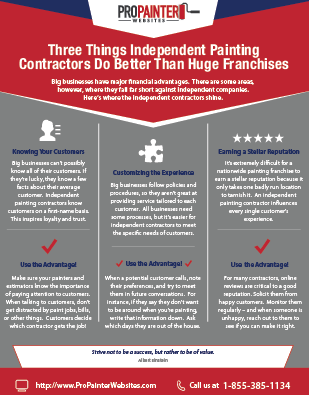Check Out The Duty Of Seasonal Factors In The Success Of Commercial Outside Painting And Discover The Best Times To Secure Long-Term Outcomes For Your Job
Check Out The Duty Of Seasonal Factors In The Success Of Commercial Outside Painting And Discover The Best Times To Secure Long-Term Outcomes For Your Job
Blog Article
Short Article By-Carlson Celik
When you're preparing a commercial outside paint job, seasonal elements can make or damage your outcomes. You'll want to consider exactly how temperature and humidity impact paint application and drying out times. Choosing the right period can ensure your paint adheres correctly and lasts longer. But which periods are truly the most effective for this kind of work? Allow's explore the crucial elements that can influence your job's success.
The Influence of Temperature on Paint Application
When you're intending a business exterior painting project, the temperature can dramatically influence just how well the paint adheres and dries out.
Ideally, you intend to paint when temperatures range between 50 ° F and 85 ° F. If it's as well chilly, the paint may not heal correctly, causing problems like peeling off or breaking.
On the flip side, if it's also hot, the paint can dry too swiftly, protecting against correct adhesion and leading to an unequal finish.
You must also think about the moment of day; early morning or late afternoon uses cooler temperature levels, which can be more positive.
Constantly examine the producer's referrals for the specific paint you're using, as they commonly give assistance on the perfect temperature level variety for optimal results.
Moisture and Its Impact on Drying Times
Temperature level isn't the only ecological element that affects your industrial outside paint job; humidity plays a substantial duty too. High humidity levels can decrease drying out times considerably, influencing the general top quality of your paint work.
When the air is saturated with dampness, the paint takes longer to heal, which can result in issues like poor adhesion and a greater risk of mildew development. If you're repainting on a specifically moist day, be planned for extended wait times in between coats.
visit the next web site to keep track of neighborhood weather conditions and strategy accordingly. Ideally, go for moisture levels between 40% and 70% for ideal drying.
Maintaining minnetonka exterior painter consider mind guarantees your task remains on track and delivers a long-term finish.
Best Seasons for Commercial Exterior Painting Projects
What's the very best time of year for your commercial exterior painting tasks?
Spring and very early loss are commonly your best options. During these periods, temperatures are mild, and humidity degrees are frequently lower, developing excellent problems for paint application and drying out.
Prevent summertime's intense heat, which can create paint to dry also rapidly, leading to inadequate adhesion and finish. Similarly, winter months's cool temperature levels can prevent appropriate drying and treating, risking the longevity of your paint task.
Aim for days with temperature levels in between 50 ° F and 85 ° F for optimum results. Remember to check the regional weather prediction for rainfall, as wet conditions can ruin your project.
Planning around these aspects guarantees your paint job runs smoothly and lasts much longer.
Verdict
In conclusion, preparing your commercial exterior paint tasks around seasonal considerations can make a substantial difference in the outcome. By scheduling work throughout the excellent temperature levels and moisture levels, you'll make certain better attachment and drying out times. Remember to watch on neighborhood weather prediction and pick the correct time of year-- spring and early autumn are your best bets. Taking these steps will certainly help you achieve a long lasting and specialist coating that lasts.
